If you are a fan of Chicken Florentine, then you have to try my Pheasant Florentine Recipe. It's by far the most popular of all of my pheasant recipes.
Pan seared pheasant breast is doused in a spinach and garlic cream sauce. It will soon become your new favorite 30-minute meal. It may look a little fancy, but this pheasant breast recipe is simple and perfect for a quick weeknight dinner. And if we ever run out of pheasant, my wife can use this Florentine recipe with some store-bought chicken.
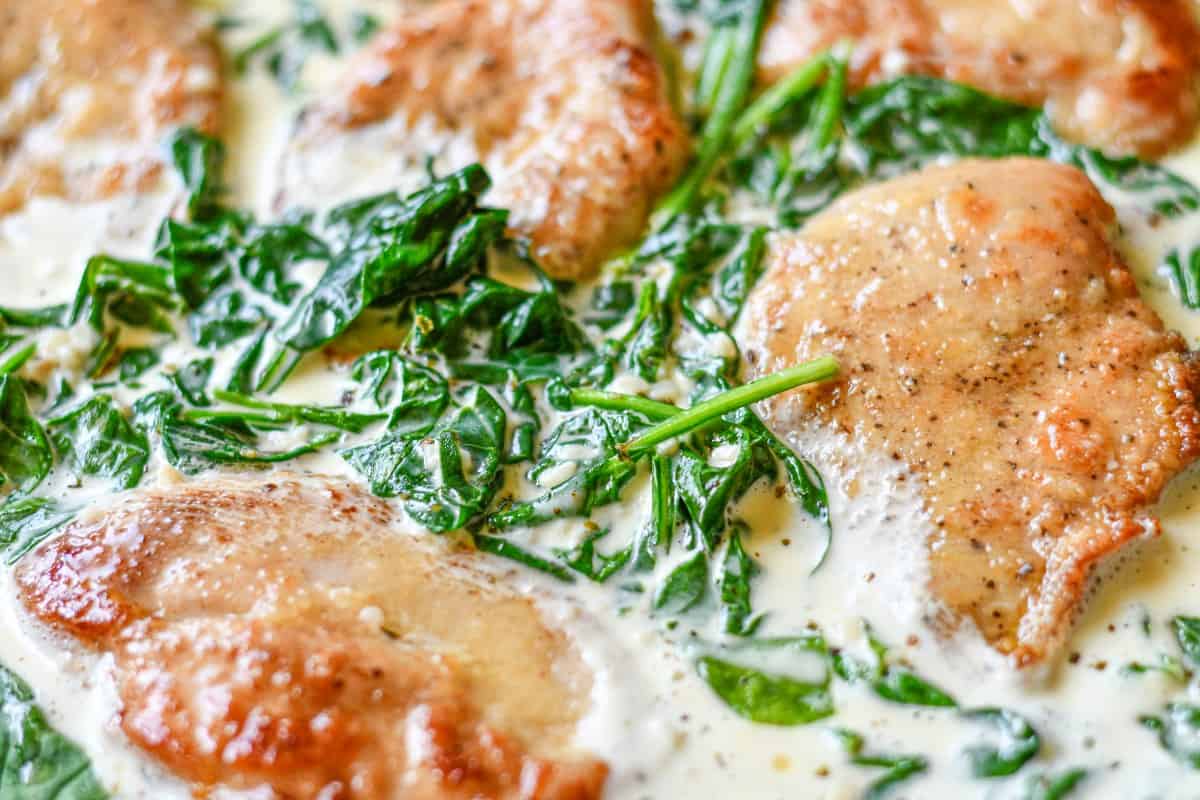
The ingredients for this ring necked pheasant recipe are straightforward, and the preparation isn’t hard at all. Lightly seasoned and floured pheasant breasts are seared for a couple of minutes on both sides. Once golden brown before, they're plunged into a luscious garlic cream sauce with fresh baby spinach. And if you are like me, you will love only having one pan to clean afterwards!
What Does Florentine Mean?
This Florentine recipe doesn't come from Florence in Italy. Florentine is actually a classic French cooking method for chicken or fish called "a la Florentine." Chicken Florentine consists of a poached chicken on a bed of spinach with a creamy sauce. But as you may have noticed from the photo of this dish, I chose not to poach the pheasant breast, but instead gave it a quick sear on both sides.
What Does Pheasant Taste Like?
Ring Necked Pheasants are lean birds that tends to dry out quickly, so they deserve extra care and attention during cooking. The flavor of pheasant is comparable to chicken with varying amounts of "gaminess" depending on how long the bird is aged.
I like to tease my hunting buddies and insist I only shoot pheasants in the head because it's preferable when hanging these "ditch parrots" to improve their flavor and tenderness. If you aren't a crack shot like myself and the BBs goes through the stomach or intestines, it can contaminate the meat, and the pheasant ends up unsuitable for hanging.
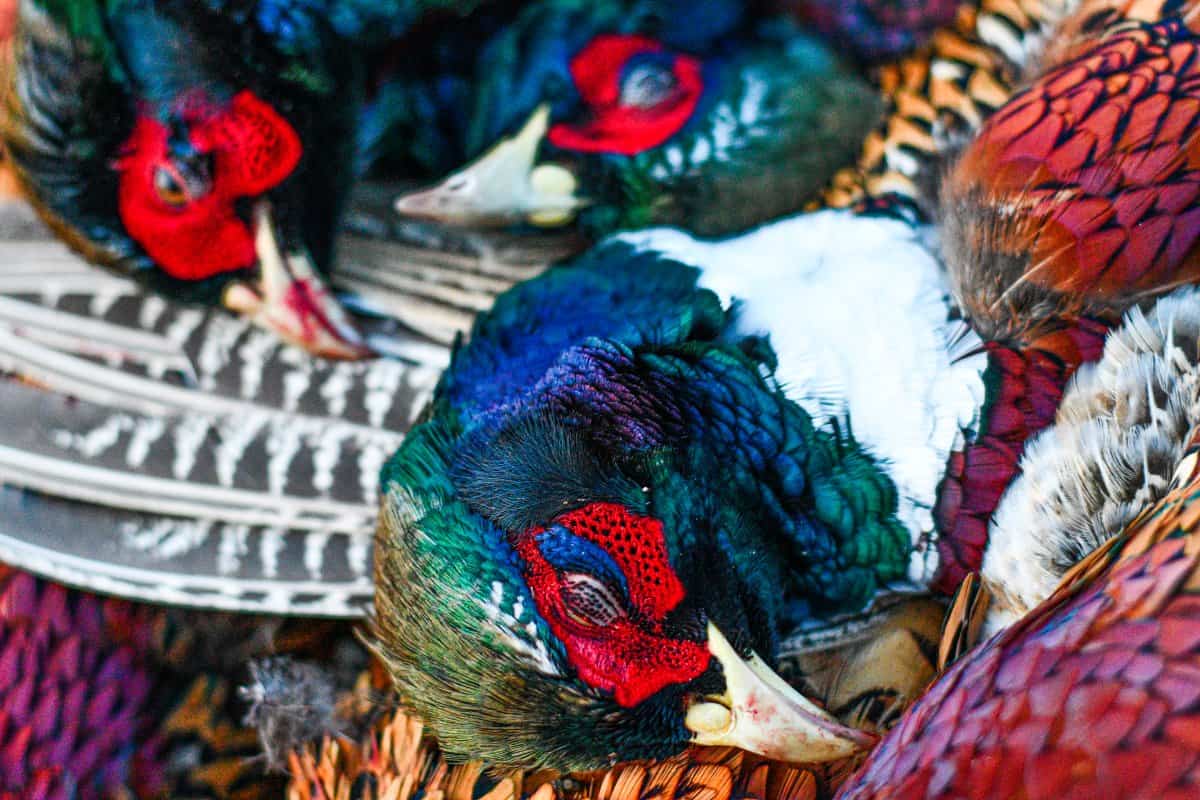
Refrigeration is important in controlling food safety risks associated with meat so it's very important to keep your birds at or just below 40 degrees F. Even if I am able to hang a pheasant to age and tenderize for a few days at my personal favorite temperature of 40 degrees F, I still like to go over the pheasant breasts with a Jaccard meat tenderizer. Anyone who knows me has heard my praises for this great kitchen gadget I use to tenderize everything from big game to waterfowl to upland birds.
The Importance Of A Pheasant Brine
A brine is simply salt dissolved in water. The brine seasons the meat and promotes a change in it protein structure, reducing its overall toughness and creating gaps that fill up with water. This keeps the pheasant meat juicy and flavorful. I prefer to use table salt vs. kosher salt for brining since it dissolves quickly in the water.
Pheasant Brine Directions
Dissolve 2 tablespoons of salt in 1 quart of water in a container large enough to hold the brine and the pheasant breasts. Submerge the pheasant completely in the brine. Cover and refrigerate for 30 minutes up to 2 hours - no more! Remove the pheasant from the brine and pat dry with paper towels before cooking.
How to Make This Pheasant Florentine Recipe
1. Place the pheasant breasts on a cutting board and go over each with a Jaccard meat tenderizer. Then place the pheasant breasts in a brine for 30 minutes or up to 2 hours (see brining directions listed below).
2. Remove the pheasant from the brine, pat dry with a paper towel. Season both sides of each brined pheasant breast with pepper and garlic powder. Coat the pheasant in flour on all sides.
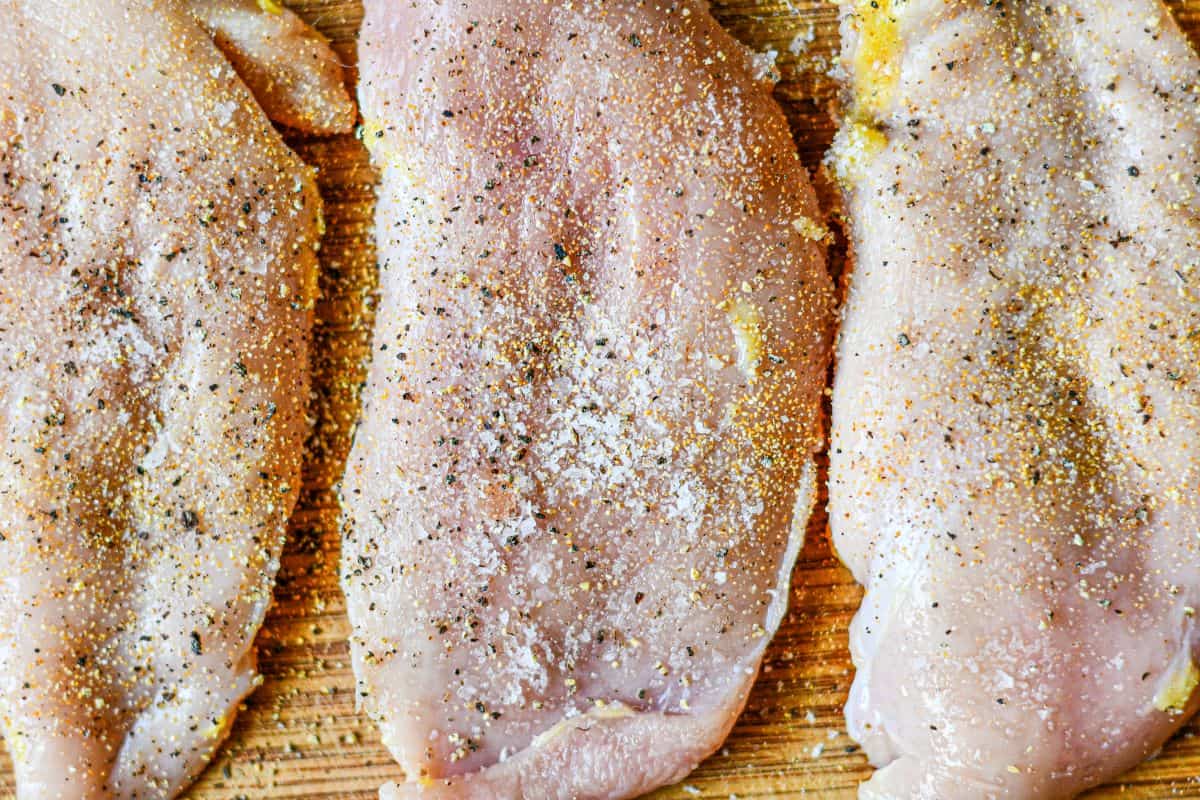
3. Add the oil and 1 tablespoon of the butter to a large skillet over medium-high heat. Cook the pheasant for 2 minutes per side until golden and the internal temperature reaches 160 degrees F. This temperature will continue to rise after removing the pheasant from the heat, ideally to a temperature of about 165 degrees F.

4. Take the skillet off the heat and transfer the cooked pheasant breasts to a plate.
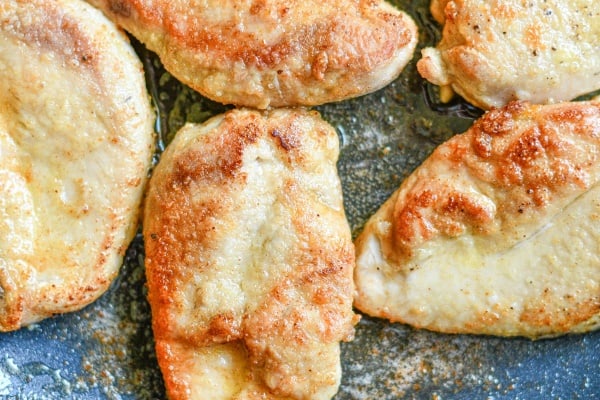
5. Return the skillet to the heat and add the remaining 2 tablespoons of butter and the minced garlic. Let it cook for about 1 minute.
6. Add the chicken broth and Herbes de Provence to the skillet. Let it cook over medium heat for 3 minutes until slightly reduced.
7. Reduce heat to low, stir in heavy cream, and simmer until thickened about 3 minutes. Once thickened, stir in Parmesan cheese.
8. Add baby spinach into the sauce and cook 2 minutes, just until wilted.
9. Add cooked pheasant breasts back to the skillet and warm through to soak up the sauce.

Pheasant Internal Temperature
For the best-tasting white meat, which includes pheasant breasts and wings, you generally want to cook the meat to an internal temperature of 160 degrees F. The temperature will continue to rise after removing the pheasant from the heat, ideally to a temperature of about 165 degrees. I find that it’s best to pull smaller cuts like a pheasant breast at exactly 160 degrees F. The heat will increase by only about 5 degrees to the recommended 165 degrees F. Past that, you run the risk of eating dry pheasant.
What Can You Serve With Pheasant Florentine
Think of all that creamy garlicky sauce like gravy and serve this Pheasant Florentine over a pile of fluffy mashed potatoes or a bed of rice. We don't buy bread often, but if I have a hunk of crusty bread at my disposal, you bet I'm using it to mop up all the sauce. Add some steamed vegetables or a salad, and you're set.
Ring Necked Pheasant
Of all the game birds that are hunted across the Midwest every fall and winter, pheasant is the most common. But while we might see the pheasant as a symbol of the Dakotas, it’s actually a native of Asia. They were introduced to Europe by the Romans and started to become popular in Britain starting in the eleventh century. It wasn't until much later in the late 1800's that they were released in the United States in Oregon.
Owen Denny brought the first Ring Necked Pheasants to the United States in 1881. He shipped 60 of them over the ocean and released them in his home state of Oregon. He released more birds in 1882 and 1884. During the late 1800's and early 1900's many pheasants were imported from England and released across the United States.
Pheasants do best in farm country mixed with grasslands, and later in December and early January like cattail sloughs. And we have a lot of both of those here in North Dakota.

Upland Bird Hunting in North Dakota
The beauty of upland bird hunting in North Dakota lies in its simplicity. It’s a walk with a shotgun. Your goal is to frighten a ground-dwelling bird into flight, so you can shoot at its green head with a distinctive red wattle. Even if you don’t find anything, you’ve had a nice walk in the fresh air. When you do find these upland birds, the jolt of excitement you feel as a hidden bird blasts off at your feet is only matched by the tasty reward of a pheasant on your kitchen table.
If you are headed our way for North Dakota pheasant season, check out the North Dakota Game & Fish Department website. And if you want me to come along with you as your camp cook, photographer, or butcher, you can find out more details here.
More Upland Bird Recipes
If you are looking for more great ways to use pheasant in your diet, be sure and check out my Pheasant Pesto Pasta and Fried Pheasant Tenders and Pheasant Fritters and Pheasant Pot Pie and Buffalo Pheasant Dip. Or you can find all my upland bird recipes here.
Join Our Wild Game Cooking Community
Sign up here to receive a new recipe in your email inbox every Tuesday morning!
DID YOU MAKE THIS RECIPE?
If you make this Super Easy Pheasant Florentine Recipe, tag @wildgameandfish so I can share it on my Instagram stories.
Did you enjoy this Florentine Recipe? Be sure to leave a 5-star rating RIGHT HERE!

Super Easy Pheasant Florentine (Chicken Florentine)
Ingredients
- 6 pheasant breasts (from 3 birds)
- ¼ teaspoon black pepper
- ¼ teaspoon garlic powder
- ½ cup all-purpose flour for dredging
- 1 tablespoon olive oil
- 3 tablespoons butter, divided
- 2 tablespoons minced garlic
- ½ cup chicken broth
- ¼ teaspoon Herbes de Provence
- 1 ½ cups heavy whipping cream
- ¼ cup freshly grated parmesan cheese
- 4 cups fresh baby spinach
Instructions
- Place the pheasant breasts on a cutting board and go over each with a Jaccard meat tenderizer. Then place the pheasant breasts in a brine for 30 minutes or up to 2 hours (see brining directions above).
- Remove the pheasant from the brine, pat dry with a paper towel. Season both sides of each brined pheasant breast with pepper and garlic powder. Coat the pheasant in flour on all sides.
- Add the oil and 1 tablespoon of the butter to a large skillet over medium-high heat. Cook the pheasant for 2 minutes per side until golden and the internal temperature reaches 160 degrees F. This temperature will continue to rise after removing the pheasant from the heat, ideally to a temperature of about 165°.
- Take the skillet off the heat and transfer the cooked pheasant breasts to a plate.
- Return the skillet to the heat and add the remaining 2 tablespoons of butter and the minced garlic. Let it cook for about 1 minute.
- Add the chicken broth and Herbes de Provence to the skillet. Let it cook over medium heat for 3 minutes until slightly reduced.
- Reduce heat to low, stir in heavy cream, and simmer until thickened about 3 minutes. Once thickened, stir in Parmesan cheese.
- Add baby spinach into the sauce and cook 2 minutes, just until wilted.
- Add cooked pheasant breasts back to the skillet and warm through to soak up the sauce.
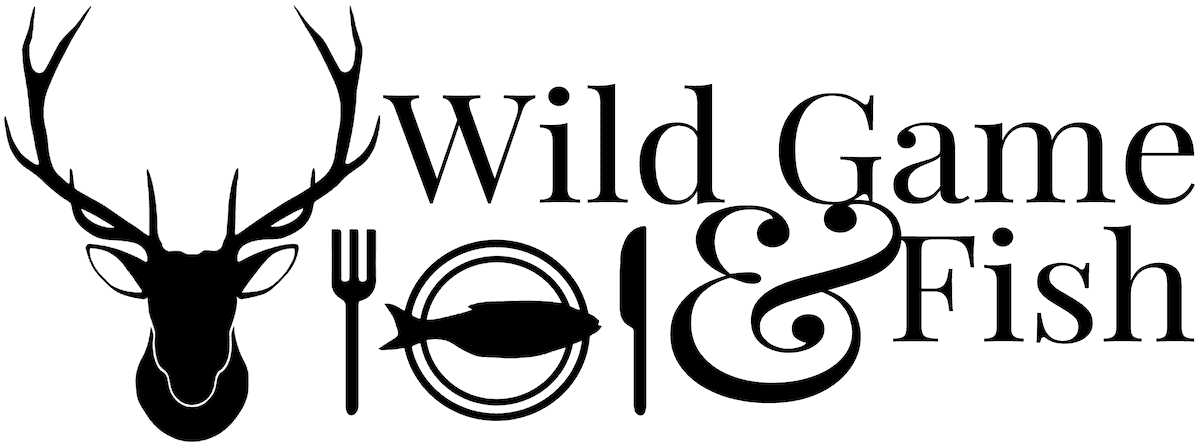



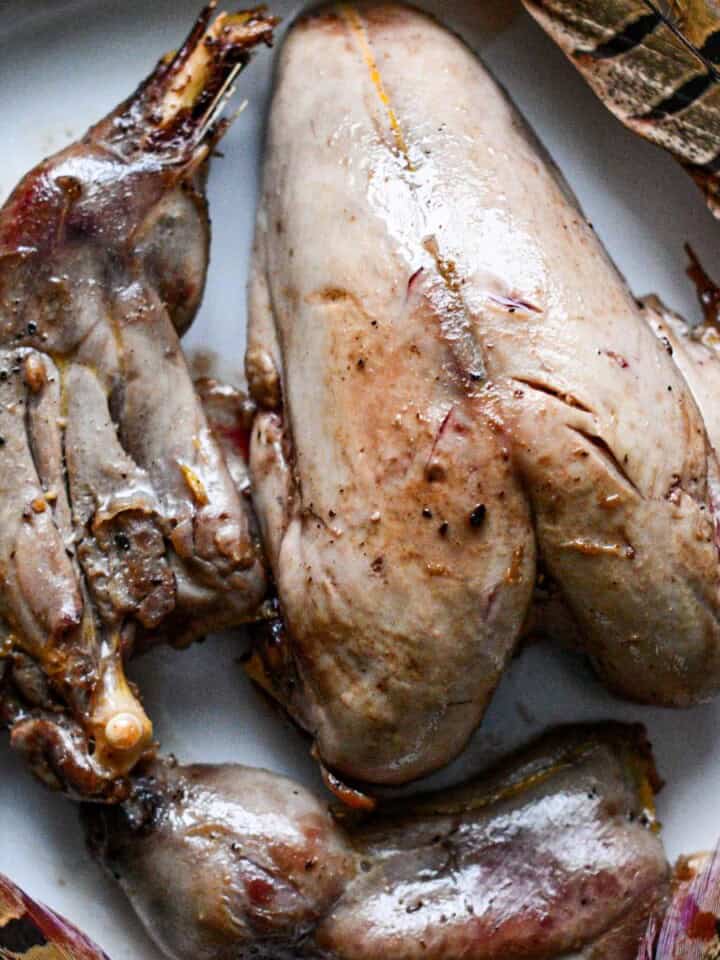
Vickie Harris says
Excellent recipe for ease in making and flavor. It was so helpful to watch you cook. I learned a great deal.
Jeff Benda says
Thanks Vickie!
Travis says
I make a lot of pheasant and this recipe is a keeper!!
Jeff Benda says
Thanks Travis! Glad you liked it!
Sam says
This was great! Definitely my new favorite pheasant recipe!
Jeff Benda says
Thanks Sam. Glad you like it as much as we do.
Gaye Nell says
Wonderful and easy recipe. Delicious!!
Gaye Nell says
The 30 minute brining was the secret to the tenderness of the Pheasant. Delicious and easy. Would make it again in a heartbeat.
Jeff Benda says
So glad you went with the recommended 30 minute brine and that it worked for you as much as it did for us!
Tanya says
Super easy and delicious. My husband and kids LOVED this dish!
Ashley says
This is the easiest recipe in the world! We absolutely love it
Rachel says
We LOVE this pheasant florentine! Thanks Jeff!
Eric L Hansen says
Delicious recipie, thank you for sharing this with us, Chef Jeff! Prepared it last night for the first time and my wife and I really enjoyed it. We both have a few ideas for the next time we make it (add more baby spinach and a batch of fresh mushrooms), but it's definitely a keeper for us. Thank you!
Jeff Benda says
Eric - So glad you liked it as much as my wife and daughter do! And I love the idea of more spinach and the mushrooms!
Andrea says
Amazing! Pheasant was tender and juicy. Sauce was delicious. Will be making again and will make Sauce and use with venison meatballs.
Alan E Stoner says
Fabulous with Chicken too.
What's the calorie count?
Jeff Benda says
Sorry Alan. We don't count calories in our recipes, so I'm not able to provide you with the information.
lars dyrdahl says
Best Pheasant ever!!!!! So easy served with aspargus and fried wildrice.
Monte says
I was reared in Western Kansas hunting with the family and living on a diet made up largely of wild game and fish. My mother was a good cook for that time, but she systematically overcooked game. This recipe was a pleasure. The pheasant was moist and the sauce complemented it perfectly without overwhelming the flavor of the bird. Your blog is a new discovery for me and l look forward to trying more of your recipes.
Anonymous says
Was simply amazing!
Jerry says
My wife and I loved this. Very easy to make
Jeff Benda says
Thanks Jerry. Glad you and your wife loved it as much as we do.
Patrick says
Phenomenal pheasant dish. This is going to be a new go to dish when I want to introduce people to game meat.
Jeff Benda says
Thanks Patrick! So glad you like it.
Barb M says
Easy and so delicious
Jeff Benda says
Thanks Barb! So glad you like it
Bob says
My wife made this for us last night and we loved it! Best pheasant recipe ever!
Jeff Benda says
Thanks Bob! So glad you loved this pheasant dish as much as we do.
C says
We brined all day, and the pheasant was tender and juicy. Very flavorful and easy recipe!
Jeff Benda says
Great to hear! So glad you loved the pheasant as much as we do.
Tony Jones says
We had a pack of four pheasant breasts left over from our Christmas Game Box from Booths (classy supermarket in northern England).
Your recipe was perfect! I was worried the sauce wouldn't thicken, but right at the end it did!
A meal which looks Restaurant but without me getting angry and shouting!
Thank you and best wishes from the UK.
Jeff Benda says
Thanks Tony! So happy to hear the pheasant recipe is being enjoyed by folks in the UK!
Lorraine McNulty says
I haven’t cooked pheasant in years!
This is an excellent.
I will add more spinach next time.
Jeff Benda says
Thanks Lorraine! So glad you enjoyed it. Great idea on adding more spinach. I've done that as well sometimes.
Agustin says
Nice share!
D Wolf says
best pheasant we have ever had!
Jeff Benda says
Thanks Donna! So happy to hear you liked it as much as we do!
Joe York says
My wife and I made this recipe a few nights ago with some frozen pheasant breasts from last season and we loved it. The light coating on the breasts added great flavor. I had already brined the pheasants before freezing which still worked nicely. The meat was moist and tender. The sauce was excellent and easy. Leftovers heated up nicely for the next two days. Thanks for the recipe Jeff. It was nice meeting you at the BHA Rendezvous in Missoula in June.
Jeff Benda says
Thanks Joe! So happy to hear you and your wife enjoyed the Pheasant Florentine! It was great to meet you in person as well.
Karen says
This was amazing!! We can't wait to do it again!
Jeff Benda says
Thanks Karen! Glad you enjoyed the Pheasant Florentine.
Anonymous says
This was excellent! Will also try on chicken!
Jeff Benda says
Thanks! Glad you liked it. And yes - it also works great with chicken.
Theresa says
Our favorite pheasant recipe
Jeff Benda says
Thanks Theresa! Glad you liked it as much as we do.
Mark k says
Best pheasant recipe ever. I’ve made this many times and everyone I’ve served it to said best pheasant they’ve ever tasted. Sent the recipe to several friends who thanked me profusely after they tried it.
Jeff Benda says
Thanks Mark. This is our most popular pheasant recipe! Glad you and your friends liked it too.